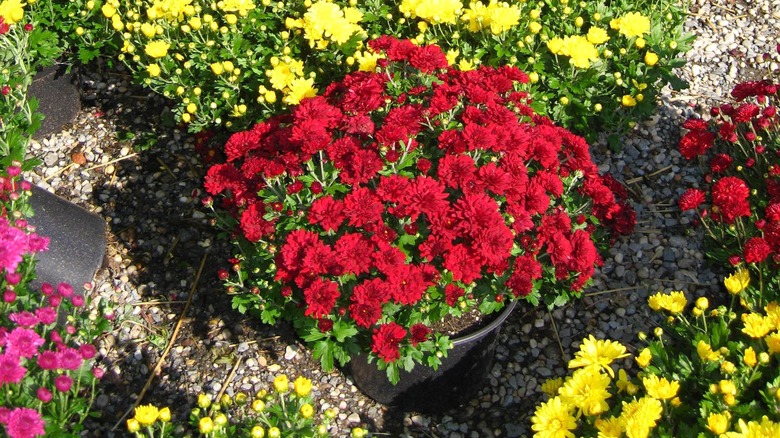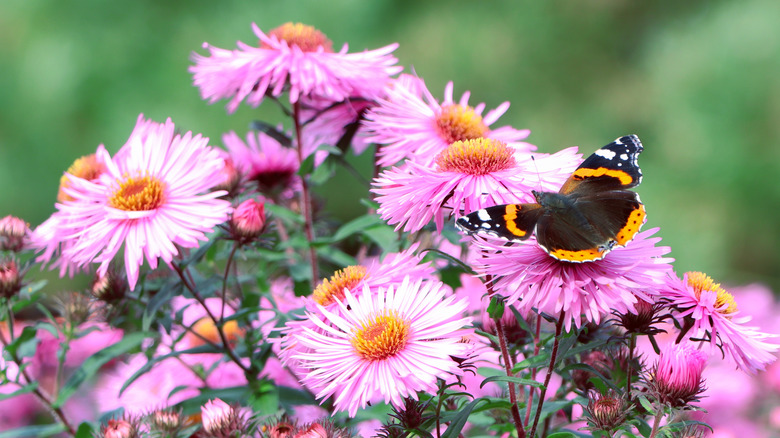While both mums and asters add bursts of color to fall porch décor and have a similar look, are they really related? As it turns out, chrysanthemums, often shortened to mums, are part of the aster family that’s more formally known as Asteraceae. However, what we commonly call an aster is not the same thing as a chrysanthemum, though they are in the same family. What really sets these flowers apart from one another are their differences in appearance. Basically, mums fall into the warmer color family and have a more neatly-shaped appearance, while asters come in cooler colors and have a more unruly look about them. Furthermore, they also have a few other differences including the height of their flowers and their USDA hardiness zones.
Both asters and mums flower during the shorter days of fall, and they need sunlight to do so. Place them on a shady porch and their blooms will wither in no time, but in a sunny area they’ll show off their color readily. Their leaves are similar in appearance, and they both have stiff stems. But when you start looking at mums and asters in more detail and paying attention to their specific needs, there are some other differences to note.
Chrysanthemums have more variety

As a subset of the aster family, mums include more than 200 species, and they come in a variety of colors that work perfectly for fall decorating. So, whether you favor flowers in a neutral like white or in a warmer tone of autumn like red, orange, bronze, or yellow, there’s a mum for you. However, not all mums look alike, since there are 13 different types of blooms. These range from the popular pompom and button types to cushion and spider varieties. Further, their heights can vary from 1 to 5 feet.
While mums are often grown in containers and used in porch displays with pumpkins and scarecrows, they can also be incorporated into landscaping when planted in the ground. They are hardy in USDA zones 5 through 9, so they can grow in warmer climates. They typically like moist soil that drains well, and fertilizing them at least once in the spring or summer will support their showy blooms that appear in the fall.
Asters can grow in colder climates

Asters, which also bloom in the late summer and early fall, come in less color options that include cool tones of lavender and pink as well as white. They often have a yellow center, something mums do not have. As potted plants, they can be mixed in with mums in autumn hues to add a complementary color to porch decorating and fall container gardens. Just like mums, they can also be cut and used in indoor flower arrangements. However, these flowers have a slightly different height range, as they can grow from ½ a foot to 6 feet tall.
Asters can also be used as landscaping plants that provide greenery in the spring and summer and showy flowers in the fall. They aren’t quite as prolific as mums in terms of variety but still boast more than 175 species that grow in the United States. They are hardy in USDA zones 3 through 8, so they can be planted in most states including some of the colder regions. They also like moist soil that drains well, and they need at least six hours of sun per day. By selecting asters or mums — or a variety of both — you’ll have lovely blooms all around your home each autumn.



